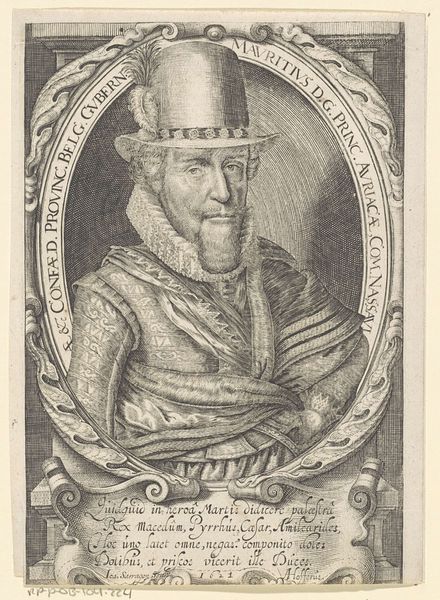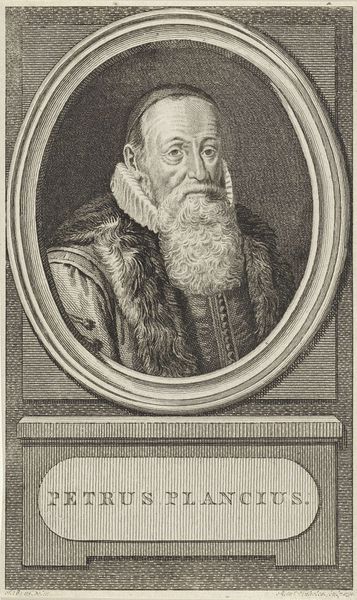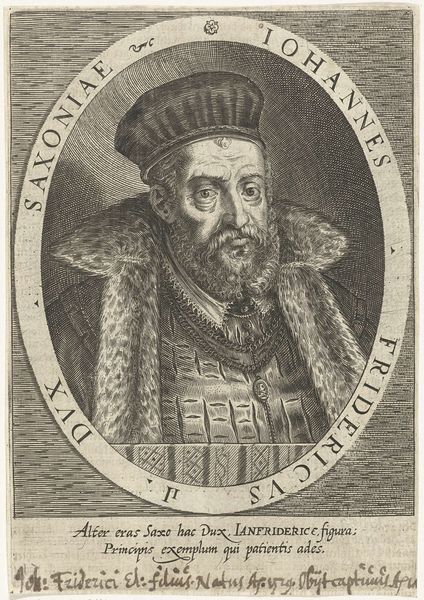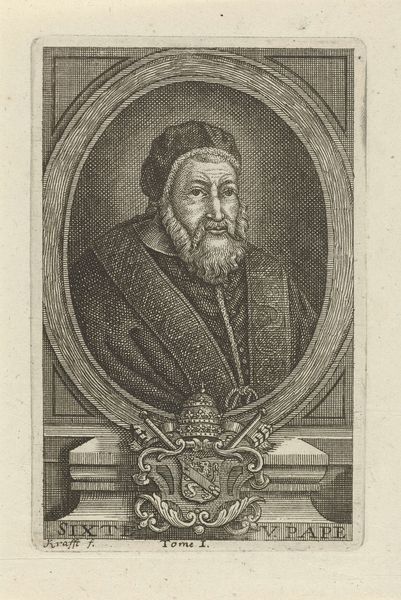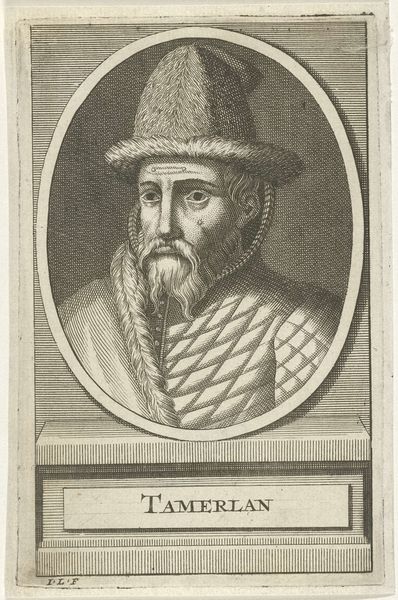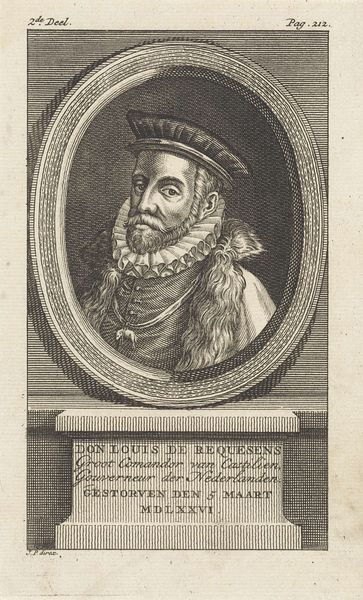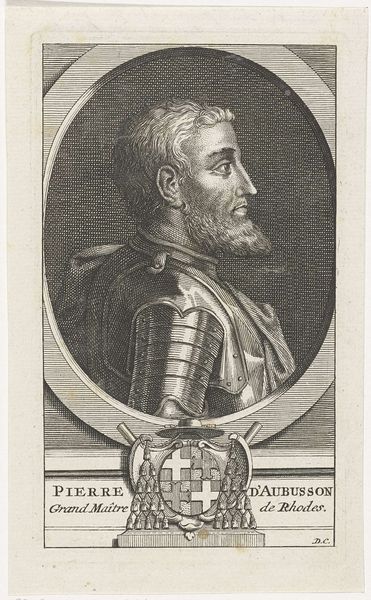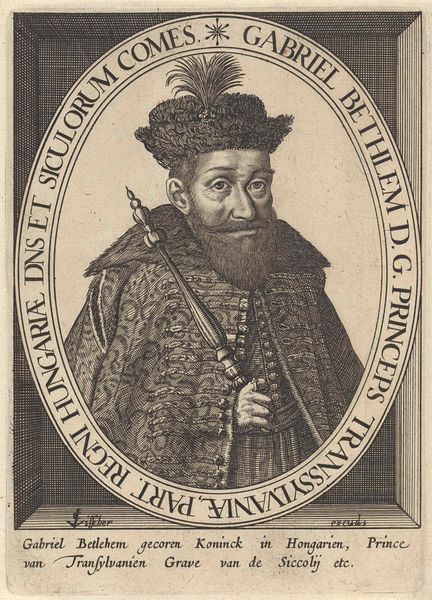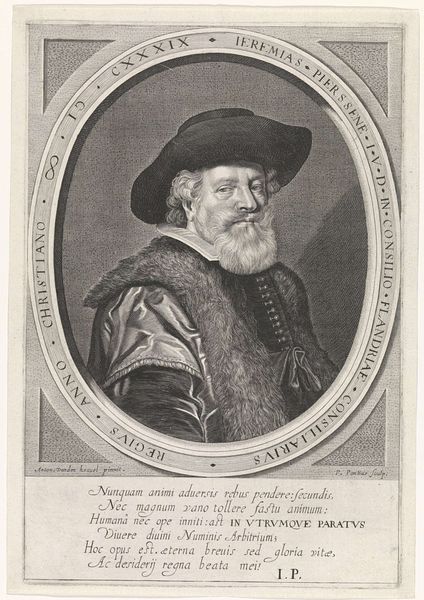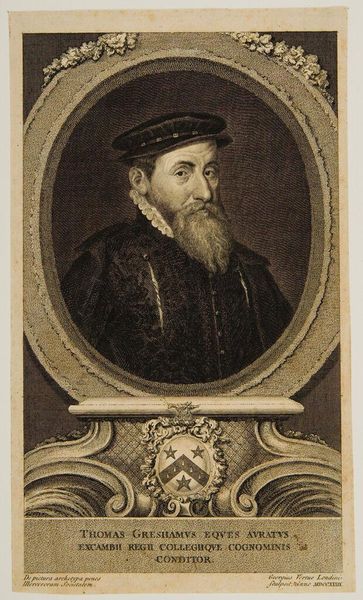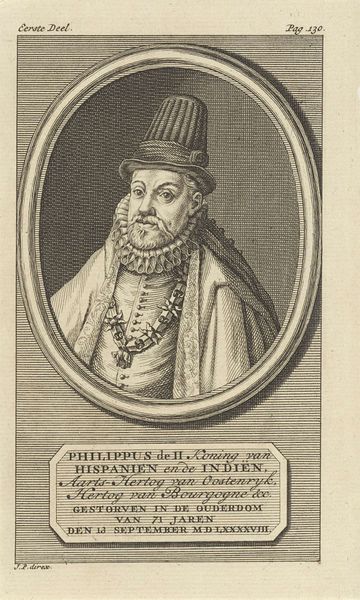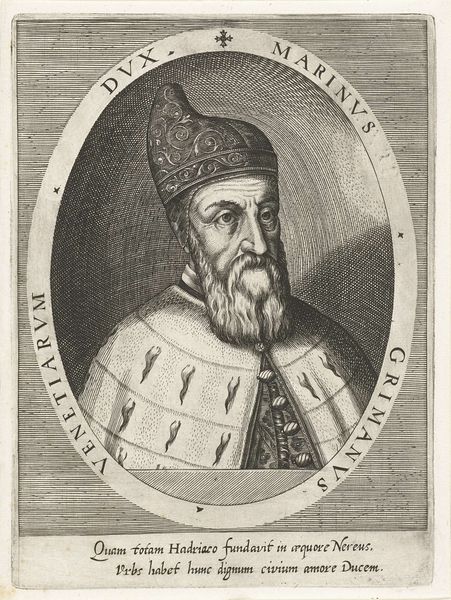
print, engraving
#
portrait
#
baroque
# print
#
history-painting
#
engraving
Dimensions: height 186 mm, width 115 mm
Copyright: Rijks Museum: Open Domain
Curator: Jan Punt created this engraving in 1749. It's entitled "Portret van Maximiliaan II, keizer van het Heilige Roomse Rijk," a portrait of Maximilian II, Emperor of the Holy Roman Empire. It's on display here at the Rijksmuseum. Editor: The intricacy is compelling, but there's a melancholic air to the piece, isn’t there? The textures created with such fine lines—the fur trim, the feathered cap—almost feel…funereal. Curator: The clothing speaks volumes. The feathered cap, the heavy chain... these are more than decorative items; they represent imperial power, lineage, and authority. Maximilian's steady gaze holds a cultural memory of empire. Editor: But also of its burden, I think. Look at how the lines around his eyes suggest weariness. Jan Punt is creating textures of power, yes, but with such precise hatching, almost evoking fragility. Curator: Consider, too, the context of the portrait. These depictions, especially in print, reinforced and legitimized rule, embedding it within the collective consciousness. Each symbol worked as propaganda. Editor: Propaganda, yes, but also the performance of power. The oval frame constricting his figure contributes to this formal, almost ritualistic, presentation of the Emperor. It feels staged. Curator: Absolutely, and consider the Latin text beneath the portrait – *Maximilianus II, by the grace of God, Holy Roman Emperor...*. Language, like imagery, sanctifies rule. He's situated within a divine narrative. Editor: The print medium itself also seems significant. Its relative affordability meant wider distribution, furthering the dissemination of Maximilian’s image. Yet the meticulous rendering belies the means of production, obscuring its potentially revolutionary reach. Curator: An intriguing tension – widespread distribution carrying weighty symbolic value, solidifying existing hierarchies. I now have a new appreciation of how portraiture can work across social fabrics. Editor: And I see the subtle ways visual textures speak not only of imperial power, but to the inherent constraints of that power—of his humanity and its finitude. Thank you for bringing the piece into a broader cultural context.
Comments
No comments
Be the first to comment and join the conversation on the ultimate creative platform.
